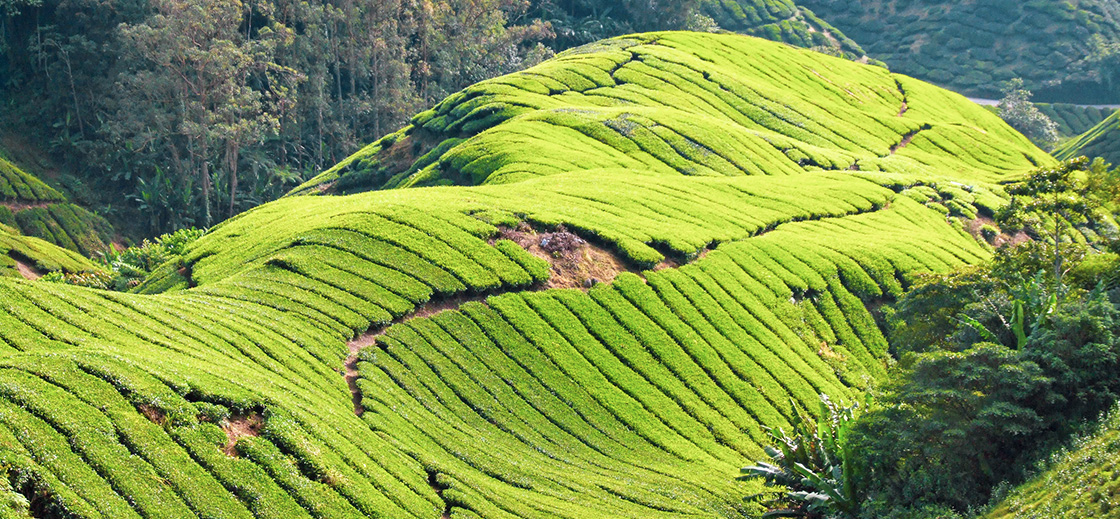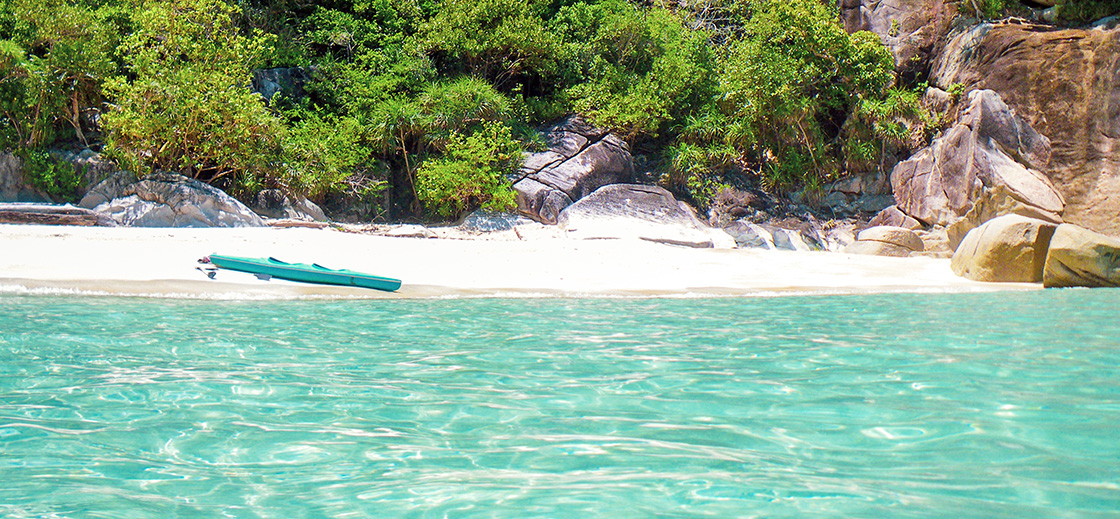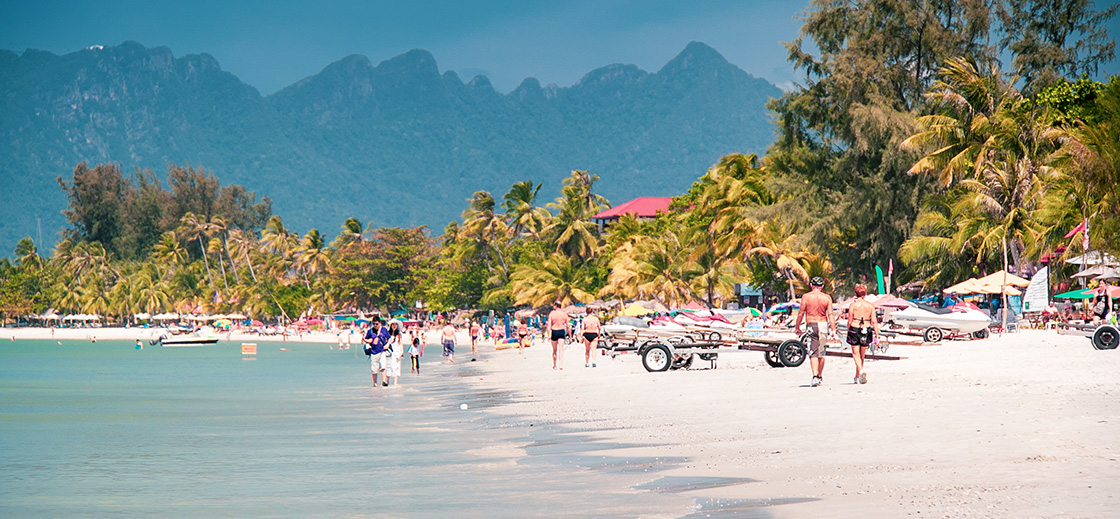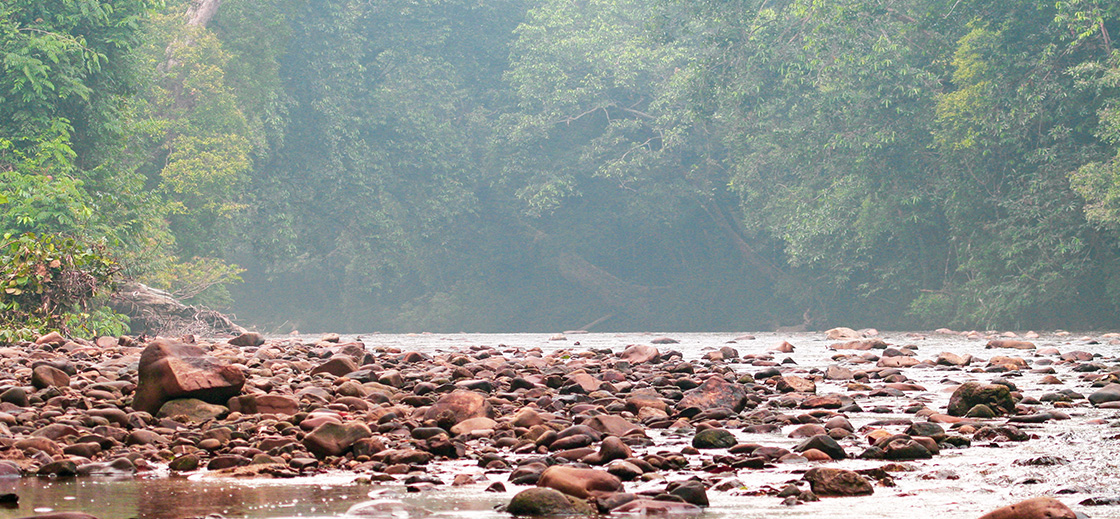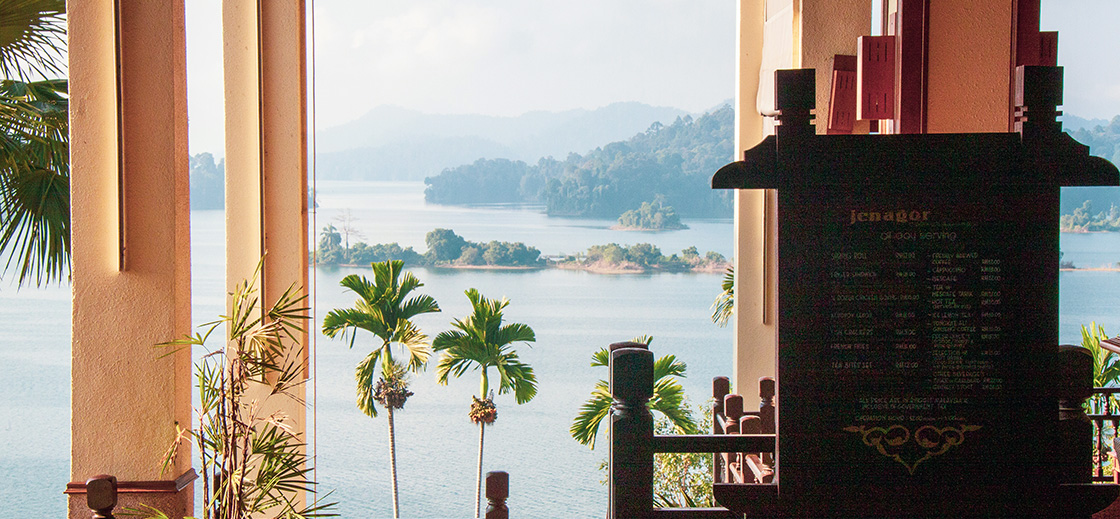Mantanani Island – A Wonderful Diving and Snorkeling Island in West Sabah
Most travelers know to include the tropical islands along the east coast of Peninsular Malaysia when planning their trip through the country. If you’re also visiting Malaysian Borneo, Sabah is always a popular destination with plenty of highlights you can easily combine. But did you know there are also many beautiful tropical islands around Sabah? Quite a few of them are classic paradise-like islands — think flat sandy beaches lined with palm trees, small laid-back resorts, and vibrant underwater life.
Mantanani is one of those islands. It’s located on the west coast of Sabah and is a typical tropical island with white sandy beaches, crystal-clear waters, and a handful of nice resorts on the main island. What makes it extra special is the view of Mount Kinabalu, Southeast Asia’s highest peak, in the background. We spent a few days there diving, snorkeling, and mostly just doing nothing — and it was absolutely lovely.
Just like the famous Perhentian Islands, Mantanani has a large island (Besar) and a small island (Kecil), with the tiny island of Lungisan in between. In terms of size though, it’s much smaller than the Perhentians. All accommodations are on the large island, while the small island is uninhabited. The main village is Kampung Mantanani, where you’ll find a few local restaurants, simple homestays, and a very basic shop (not a real supermarket). There’s also Siring Bukit, a small village with about 30 houses. So really, the island is almost uninhabited — just a few hundred locals… and some cows 😊.
Dugong Beach is the nicest beach on the island. It’s quite long, and you can snorkel directly from the shore (though joining a tour is usually better). There’s a beach bar here, making it one of the more lively areas for tourists. Some of the best beach spots belong to the resorts, and the beach eventually merges into that of JSK Mantanani Island Resort, the island’s most luxurious accommodation, where the chalets are located right on the beach.
Mantanani is a tiny, car-free island — there are no roads at all. It’s about 3 kilometers long and only a few hundred meters wide. You’ll find a few simple resorts scattered around and two larger, luxury resorts. The northern tip has no beach and nothing much to see, though you can reach it by kayak. You can easily walk around the island, or take a water taxi between the jetties.
What is there to do?
Mantanani is all about chilling out, diving, snorkeling, and beach time.
Most resorts offer extra activities to keep things fun and interesting. You can rent a transparent kayak and paddle around the island, either solo or as part of a group tour.
Another nice option is a walk through the island and Kampung Mantanani. The locals are super friendly and happy to chat (they speak excellent English), and the kids love seeing tourists around — without expecting anything in return, which we really appreciated.
If you enjoy fishing, you can rent a rod at Sutera Mantanani Resort and fish from the shore or shallow waters (not from a boat). Some of the small resorts on the northwest side also offer fishing trips at sea.
In the evenings, you can go for a night walk to spot the Mantanani Scops Owl, a rare species that only lives on the island — or simply hang out with a book in your resort lobby. JSK Mantanani Resort even offers bike rentals, and if you’re staying there, a bike ride is included in your stay.
You might also spot fireflies at night. There aren’t tons of them, but it’s still a magical experience — especially for kids (and a little bit exciting in the dark!).
Mantanani has amazing sunsets, especially from Siring Bukit village. You can also join a sunset cruise, offered by several resorts. The boat takes you to the perfect viewing spot just before sunset. You’ll leave around 5:30 PM and be back by 7 PM.
Another cool spot is the “Dragon’s Tail”, a huge sandbank at the eastern tip of the island. It’s perfect for a walk through the shallow waters and super popular with the Instagram crowd. Also worth checking out is the Lungisan Cave, a massive cave on the nearby small island.
Scuba diving
Mantanani is still somewhat under the radar. Most tourists here are locals or visitors from Singapore, often combining a few days on the island with a stay in Kota Kinabalu. The dive sites are great — similar to what we experienced in Perhentian and Redang. There are about 16 dive sites, offering a nice variety of fish and marine life.
We had awesome conditions during our dives — clear water and excellent visibility. The dives were fun and varied, mostly with macro life like nudibranchs and small reef fish, but not so many big species (it’s always nice to spot a turtle, but this wasn’t our day!). There are also three wreck dives near the Usukan dive site.
Years ago, dugongs (sea cows) were often seen around the island, but sadly, it’s been a long time since anyone has spotted one.
The best part? No crowds underwater. You won’t find five boats diving the same site at once. Most larger resorts have their own dive centers, offering daily fun dives, courses, and refresher dives. We dived with the JSK Mantanani Resort dive center and loved it. The resort is fairly new, and while most guests don’t come specifically to dive, the divemasters were super enthusiastic. They told us that even divers from outside the resort drop in for dives at JSK.
During the right season (March to September), visibility can reach up to 40 meters — though we also had crystal-clear water in October. Mantanani is becoming a “muck diving” destination too, with all sorts of cool critters like seahorses, shrimps, blue-ringed octopuses, and more.
Diving course at Mantanani
Just like Perhentian, Mantanani is a fantastic place for a diving course. These days, you can often complete the theory part online at home, then do the practical part once you’re on the island — much easier than in the past.
There are plenty of calm, shallow dive sites that are ideal for beginners to practice.
If you’re not ready to commit to a full PADI Open Water course, you can try a “Discover Scuba Dive”, which is a single guided dive in a safe spot — perfect for first-timers who just want to experience the underwater world without too much pressure. For children there’s the special “Bubble Maker” dive, a great way for them to have their first steps underwater.
Snorkeling
You can snorkel in many places right from the beach. That’s why we always bring our own snorkeling gear (at least a mask and snorkel). Sometimes you’ll already see some beautiful coral, and if you’re lucky, you might even spot some fish or a turtle. If you rent a kayak, the best place to snorkel is around Lungisan, where there’s a beautiful reef surrounding a large rock that protrudes from the water. Snorkeling near the sandbank in front of Lovely Mantanani Beach Club (Kampung Siring Bukit) is also great.
You could also consider joining a snorkeling trip, which we actually recommend, since it takes you to the most beautiful spots. These organized trips usually include visits to the top snorkeling spots around the islands. You’ll often join other guests from nearby resorts and have lunch on the boat between two snorkeling sessions. The most popular snorkeling spot is around Mantanani Kecil. The coral here is stunning, with all kinds of fish, and it’s also where you’re most likely to see larger fish and turtles. A snorkeling trip usually includes a life jacket, diving mask, snorkel, fins, and lunch on the boat.
When snorkeling, make sure you never stand on the seabed. Also, stay away from jellyfish and be cautious of various poisonous — even highly poisonous — species (like the extremely venomous blue-ringed octopus), as well as lionfish (which are very flashy) and stonefish (which are almost impossible to spot on the seabed).
Accommodations
There are only a handful of accommodations on the island. The most popular and well-known are the luxury JSK Mantanani Island Resort and Sutera Mantanani Resort. There’s also the small-scale Nido Mantanani Lodge, Little Dolphin Resort, GreenHouse Ecolodge, and ReLuxe De Mantanani. They’re all excellent, though some are more luxurious than others. The large resorts are here to stay, but the smaller ones often change owners or names. Although they don’t plan to build much more on the island, chances are the number of accommodations will increase as the island gets more popular.
Mantanani isn’t a typical backpacker island. Even the smaller resorts are still quite pricey. If you want to keep your costs low, consider staying at one of the homestays, where you’ll sleep in a room in a local’s house. Most of these are located in Kampung Mantanani.
Keep in mind that it’s a small island with limited accommodations. If you show up without a reservation, there’s a chance everything’s fully booked — or that the only available rooms are at JSK Mantanani or Sutera Mantanani, where prices are quite high (but full board is included, which is really convenient).
Read more about our stay at the JSK Mantanani Island Resort here.
Food & drinks
Every resort, big or small, has a restaurant where you can get a decent meal. The two large resorts offer full board packages, which means three buffet meals a day are included in the room price (that’s partly why those stays cost more).
If you want a change of scenery, you can still eat at the big resorts for lunch or a quick snack. There are also a few warungs in the village serving some tasty local dishes. However, there aren’t any separate beach restaurants, apart from those at the smaller resorts.
Mantanani with small children
In our opinion, Mantanani is great for families with small children. The island is small and easy to navigate, and most rooms are spacious. You can walk straight into the sea from the beach, and the water stays shallow around most of the island. All the accommodations have white sandy beaches that gradually slope into the sea, which makes it easy for kids to walk and swim safely.
You can rent snorkeling gear at the dive centers, but having a life jacket for the kids is even more important. Also bring a rash guard or other UV-protective clothing for sun protection.
Most resorts have a few canoes for rent, which is a fun way to explore the island from the water — kids can easily join a parent in the canoe.
Sutera Mantanani Resort also offers water sports like banana boating, canoeing, and even jet skiing. It’s not really our thing (and probably never will be), but older kids will love it.
When it comes to food, the small resorts don’t usually have a lot of variety. French fries are available almost everywhere, and you can always go to one of the luxury resorts for a more Western-style lunch. If you’re unsure, it’s a good idea to bring extra food from Kota Kinabalu. At the smaller resorts, you can often use the kitchen yourself. At the more upscale resorts, the kitchen staff can prepare food you bring. There’s always fresh fruit available, so you don’t need to worry about picky eaters.
Getting to the island is also fairly easy. If you book in advance, transfers and the boat ride are usually included in the price (with pickup from an agreed location in Kota Kinabalu). The northern part of Sabah is also easy to explore by rental car. Just check in advance where and when you need to be at the harbor for your boat — you’ll leave your car parked there during your stay. The two larger resorts each have their own private jetties with regular departures.
Best time to visit
The low season runs from October to March, when the weather can be a bit less predictable. It’s not a real rainy season, but depending on sea conditions, boats may sail less frequently — or sometimes not at all. The best time to visit is between April and September, but the island is open to visitors year-round.
If you plan to visit in July or August, make sure to book early, as that’s peak season and accommodations fill up fast.
How to get there?
Most travelers come from Kota Kinabalu. From there, you’ll need to arrange a transfer or taxi to Kota Belud, which has several small harbors where boats depart for Mantanani. It’s about 80 kilometers, and the drive takes roughly 1.5 hours, depending on traffic. The boat to the island takes around 40 minutes. The exact boarding location may change due to the tides.
If you’re traveling by car, you can leave it parked at the harbor during your island stay. The boat ride costs around RM35 per person. Try to set off early, since weather conditions tend to change later in the day. Always confirm your arrival time with your resort.
The two luxury resorts, JSK Mantanani Island Resort and Sutera Mantanani Resort, offer private transfer services for their guests. If you’re staying at JSK, they’ll pick you up from Kota Kinabalu Airport (BKI) or Jesselton Point Terminal, and your boat will leave from the JSK Rampayan Jetty. If you’re staying at Sutera, their shuttle departs from the Magellan Sutera Resort in Kota Kinabalu and arrives at the Sutera Mantanani Jetty. The cost is RM75 per person, one way.
Kota Kinabalu is the capital of Sabah, with dozens of daily flights from all over Malaysia. The flight from Kuala Lumpur takes just under 3 hours, and tickets typically start around RM300 (less if you find a good promotion). There are also several daily flights from Singapore, since the Kota Kinabalu area is a popular destination among Singaporeans.
Checklist
- Sunscreen
- A cap or umbrella to protect you from the strong sun
- Quick-drying clothes
- Diving goggles, snorkel, and flippers (you can also rent them on-site)
- Sunglasses
- UV-resistant swimwear for snorkeling (especially if you’re traveling with kids)
- Snacks from the mainland (there’s not much for sale on the island)
- Mosquito repellent (DEET)
- Itch relief cream
- Food and drinks (if you’re staying at a basic homestay)
- Cash (if you’re not staying at one of the luxury resorts)
- Underwater camera (we use an OM System TG-7 with underwater housing)
- Flip-flops, and possibly water shoes
- Poncho or raincoat
Tips
- If you’re heading that way just for a diving course, we can highly recommend Bigfin Divers on the mainland, near Kota Belud. They offer a complete PADI OW beginner’s course for RM1300. They also have their own resort where you can stay at reasonable prices. Bigfin also offers fun dives around Mantanani.
- If you don’t want to stay overnight, you can also book a day tour that leaves from Kota Kinabalu in the morning and brings you back to your hotel at the end of the day. This trip is offered by Klook.com, among others, and we’ve had good experiences with them. It sounds tempting, but honestly, it’s better to stay on the island for a few nights. The distance from Kota Kinabalu is quite far, and you’ll spend most of the day just traveling. If you want to go snorkeling from Kota Kinabalu, just head to one of the islands in the Tunku Abdul Rahman Marine Park, which is right across from the city.
- Cell phone signal is poor in many parts of the island. If you’re staying at a more luxurious resort, you’ll usually have Wi-Fi in the lobby.
- Bring everything you need from Kota Kinabalu — there’s practically nothing for sale on the island except a few snacks.
- It’s a small and quiet island. Don’t expect any nightlife, apart from some fun at the bar in the bigger resorts.
- Bring enough cash. You can pay by credit card at the luxury resorts, but if your card isn’t working due to bad weather or poor signal, you’ll need to rely on cash. Withdraw money in Kota Kinabalu before you go. For a 3D2N trip, RM1000–RM1500 should be enough (keep in mind the daily ATM withdrawal limits).
- Especially in the low season, or after a stretch of bad weather, various types of rubbish may wash up on the beach. Most resorts clean up quickly, but it can still be a bit of a sad sight. Locals are now very aware of their role in attracting tourists. Together with the resorts, they regularly organize beach clean-ups. You usually won’t notice this at the more luxurious resorts — their beaches are kept spotlessly clean.
- Mantanani is also well-known among bird lovers. A few rare bird species can be found only around this island. Bird watchers from around the world come hoping to spot the Mantanani Scops Owl (Otus).
- If you decide to explore the island by canoe, or paddle over to nearby Lungisan Island or even Mantanani Kecil, always keep an eye on the weather. If you see dark clouds forming in the distance, it’s time to head back to the main island immediately. The best time to go is early in the morning — afternoons are more likely to bring thunderstorms.
- If you really want to set a good example, take all your rubbish back to Kota Kinabalu with you. Large zip-lock bags from IKEA are perfect for storing waste. They’re also handy in your chalet to keep out any unwanted critters.
- Years ago, I read about dugongs (sea cows) living around Mantanani — they were often spotted by divers and snorkelers. A few years back, sightings became rarer, and now your chances of seeing one are very slim. If you do spot this beautiful creature, you’re incredibly lucky! Based on past sightings, the best chance is between September and November.
- The island is also a popular breeding ground for sea turtles. They come ashore at night — almost year-round — to bury their eggs. It’s an amazing experience, but chances of witnessing it are pretty small. The island is just a bit too big for someone to randomly catch it happening. Still, you can ask your resort if they can keep an eye out and wake you up if there’s a sighting.
- All the Instagrammable spots scattered across the island were quite amusing — from swings to big signs with quirky phrases. It was clear that this wasn’t aimed at Western tourists. But visitors from Singapore and China love it and spend hours taking photos. All part of the fun 😊
- Mantanani is a perfect destination for a short getaway. The first time we visited, we stayed for 3 days (2 nights), and looking back, it felt a bit too short. Not because there’s so much to do — but because it’s a great place to do absolutely nothing 😊
- Modern phones like the Samsung S24 Ultra have a special stargazing mode. You can take amazing shots of the Milky Way, since there’s hardly any light pollution on the island.
- If you’re traveling with very young children, consider Pulau Dinawan, which is much closer to Kota Kinabalu. The Ara Dinawan Resort is a real gem — though not exactly budget-friendly.
- The island was extremely humid during our stay. It had rained heavily in the days before. Even with the air conditioner on the dry setting, the room stayed damp and our clothes barely dried. That’s just part of tropical island life in Malaysia.
- If you visit the island between March and July, you might be lucky enough to see blue bioluminescence from a type of algae — a magical sight.
- If you’re driving to the harbor in a rental car, consider doing the Kawa-Kawa River Cruise either before or after your trip to Mantanani. You might spot proboscis monkeys and fireflies — a nice little bonus to your adventure.
Suggestions?
Got any good tips to share with us? Do you know of any great things to do in Sabah, or tips on the best places to eat? Let us know by leaving a reply below or join our private Facebook Group Friends of Malaysia.
